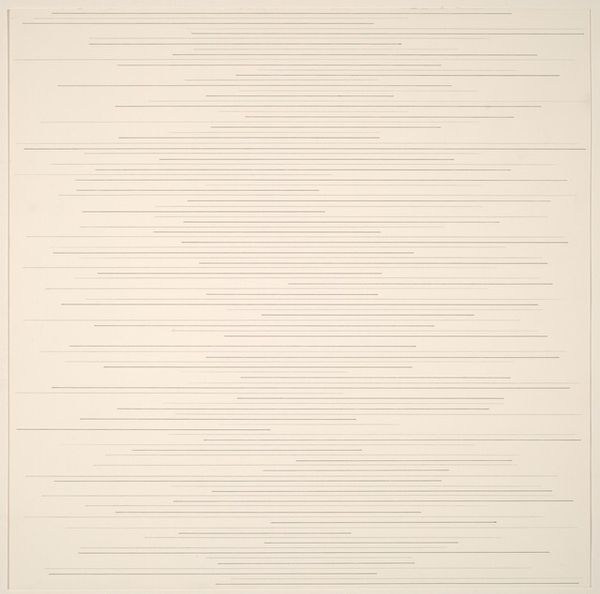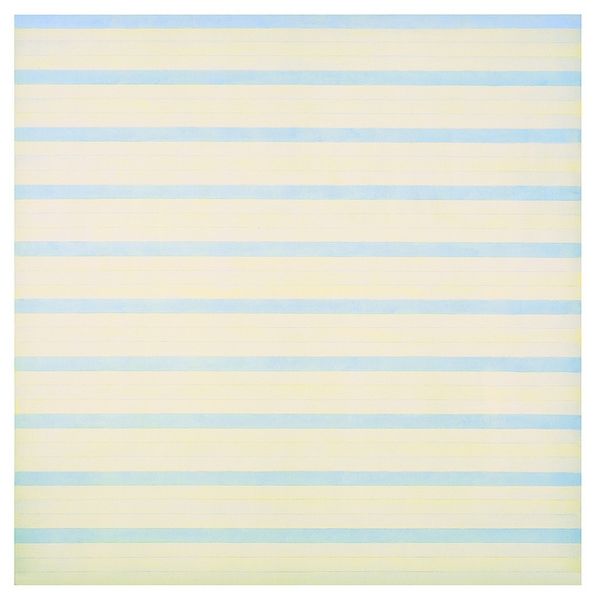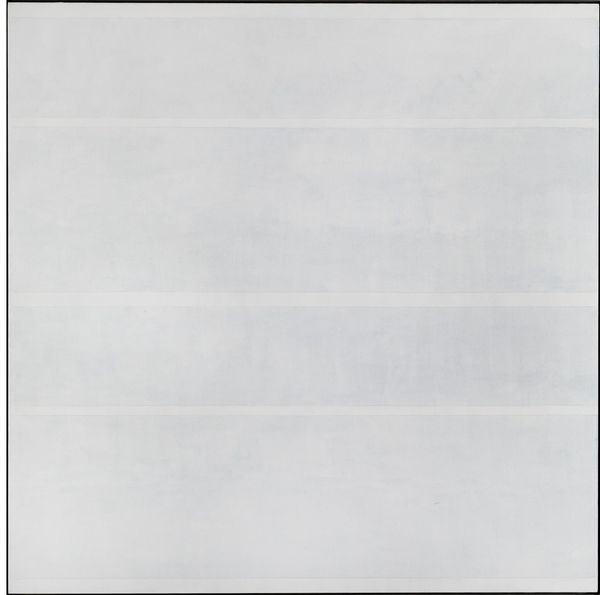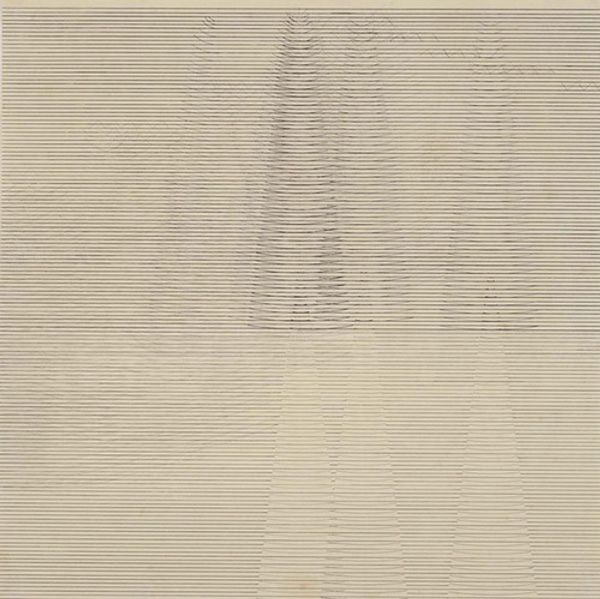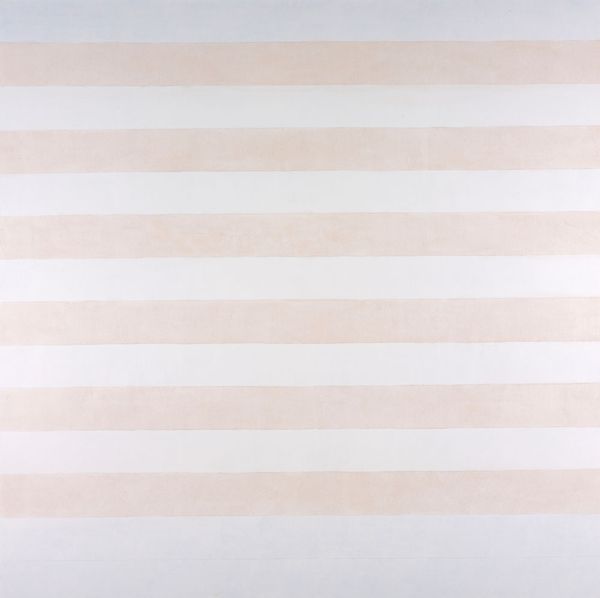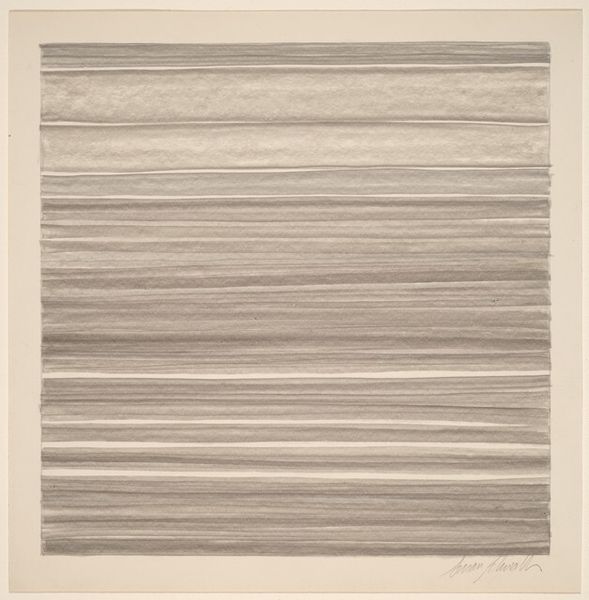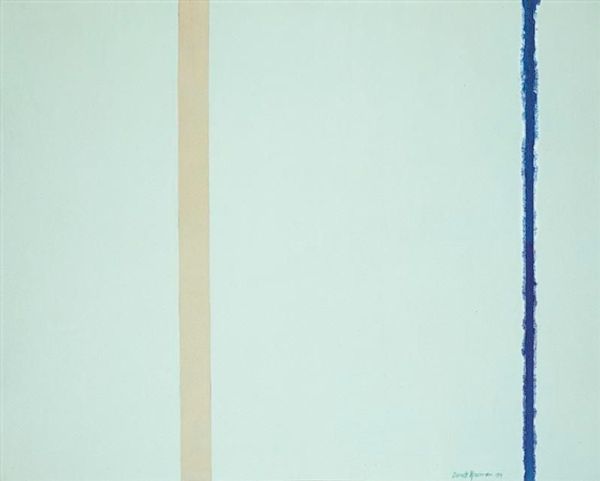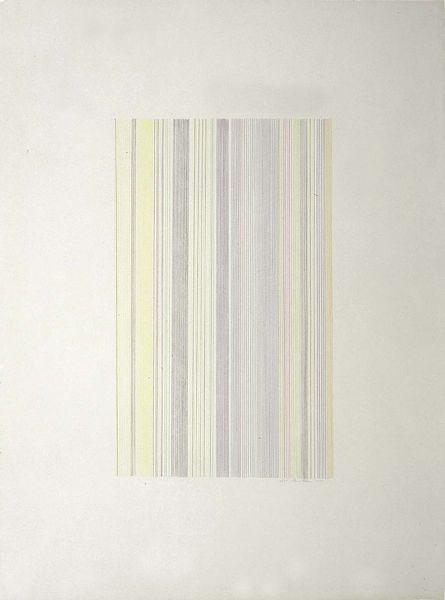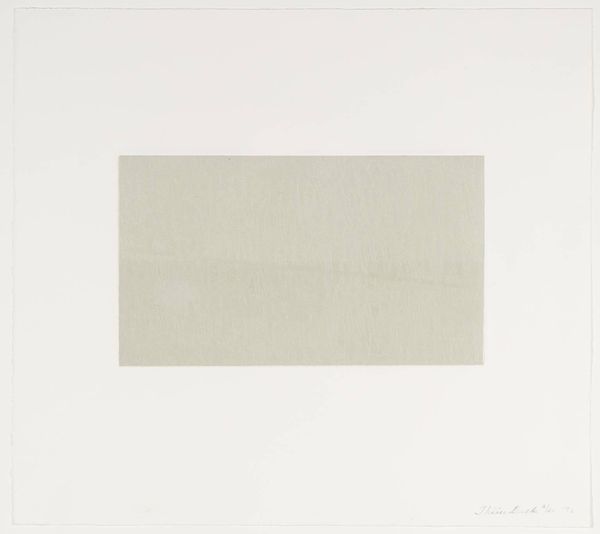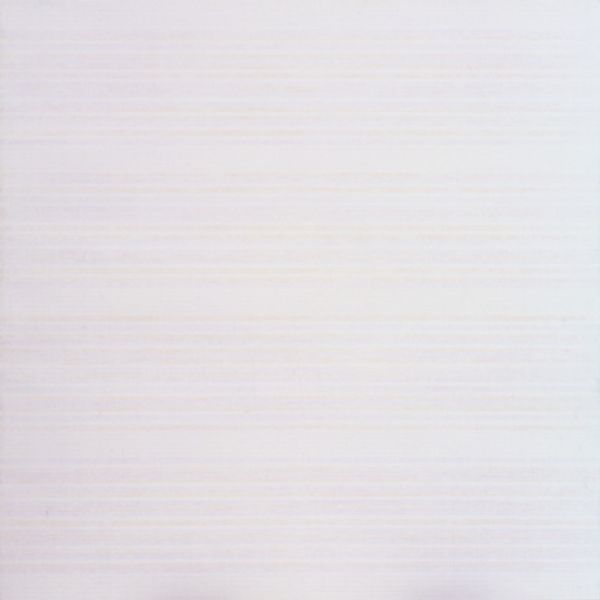
Copyright: Agnes Martin,Fair Use
Editor: This is Agnes Martin's "I Love Life," created in 2001 using acrylic paint. There's something incredibly serene and calming about its simple, horizontal lines. What do you see in this piece? Curator: It's interesting that you describe it as serene. Looking at it from a historical perspective, Martin's work disrupts the hyper-masculine, emotionally charged atmosphere often associated with Abstract Expressionism. How do you think this subversion of expectation might affect the art world at the time? Editor: It definitely feels like a quiet rebellion. The grid structure seems so controlled, almost a deliberate rejection of chaos. Is it a challenge to the prevailing macho aesthetic of the 1950s and 60s? Curator: Precisely! It challenges it and carves space for different sensibilities, and ways of experiencing and creating art. The grid itself is also noteworthy. Historically, the grid is loaded, but also allows artists like Martin a structured space for experimentation. Think about Rosalind Krauss’ essay "Grids." She views it as an emblem of modernism, related to spiritualism, but she says “in the space of the grid, the relationship to things is entirely freed from the demands of supporting such relationships.” Would you agree? Editor: I would agree! It frees the painting from pure representation. So in "I Love Life", these simple horizontals gain meaning in relationship to a more widespread social need for calm, after periods of turbulence? Curator: Exactly! They offered a visual sanctuary from the overwhelming stimuli and social turmoil that defines a modern human condition. What is your understanding of what we gain in this quiet, reflective moment? Editor: I appreciate the art historical perspective, that what looks simple can reflect bigger cultural forces. Curator: And I found your reaction interesting - that serenity can indeed function as a quiet rebellion.
Comments
No comments
Be the first to comment and join the conversation on the ultimate creative platform.

